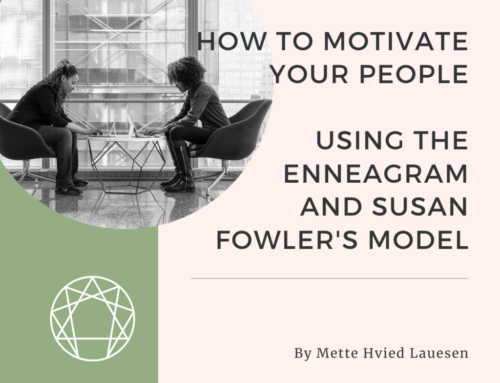As Enneagram and personal development practitioners, we’ve felt the call to bring this powerful growth material out into the world. But how do we let others know about our important work?
These days, having an online presence is essential for any business. Whether it’s to use social media platforms or check their email, almost everyone spends a significant amount of time online, making this the number one way to attract interest in what you do. Online tools allow you to shine in front of and connect with a larger number of people than going to in-person events, and it’s possible for small businesses to grow their online presence at a minimal cost.
It was a privilege to present Go Digital: Make Your Enneagram Brand Shine! to an audience of Enneagram and personal development professionals at the most recent IEA Global Conference. Drawing upon my experience assisting small growth-oriented businesses with their digital presence, I discussed the basics of setting up an online marketing suite, as well as strengths and challenges each Enneagram type encounters in the process.
Creating a full online presence involves taking advantage of the suite of tools available to businesses online. The essential services you’ll want to use are:
A Business Website and Blog
Your website is your digital hub and the first place prospective clients will look to learn more about you. With numerous tools such as pre-selected templates and a straightforward drag and drop setup process, it’s possible for even the non-tech savvy to create a simple website on their own. WordPress, Squarespace, and Wix are three excellent website creation tools.
Keep your site simple and easy to navigate. Most visitors will want to get some sense of who you are (your About page), what you do (a page about your work and services), and a way to get in touch (your Contact Me page). If you offer workshops and products, create additional Event and Online Store pages.
Once your site is up and running, it’s time to start a blog on it! A regularly updated blog (at least monthly) will keep your readers interested in your work and returning to your site. A great blog doesn’t have to be long, but it should be helpful and informative to your target audience and include a call to action at the end of your post.
Do you prefer talking to writing? In lieu of a blog, you can also record video logs, or vlogs, and upload them to your website. Vlogs should follow the same basic guidelines and principles as a traditional blog.
Your Newsletter
Not everyone is active on websites and social media, especially in the Enneagram field where the average consumer is slightly older than in some other industries, but almost everyone checks their email. An active mailing list is the perfect way to shine right in your clients’ digital backyard. Software such as Mailchimp and Constant Contact will help you create an attractive newsletter compliant with your country’s email marketing and data protection laws.
The best newsletters offer something additional you don’t offer on your website or social media; for example, they might include exclusive discounts for your services or content unique to the newsletter. Original curated newsletter material will increase interest in your newsletter and make you more likely to attract and retain subscribers.
You can get subscribers by offering a digital download on your website, spreading the word on social media, and including a sign-up sheet when you host events. Keep in mind that legally subscribers must manually opt in to the newsletter itself (this is different from buying a workshop or product) and be allowed to unsubscribe at any time.
A Social Media Presence
Social media is how your business builds up social capital. Having an active social media presence shows people that you’re actively engaged in your business and interested in them. Social media is less about direct marketing and more about interacting and having conversations.
Ideally, only a small percentage of your social media should be posts directly advertising yourself. Instead, interact with audiences by sharing your own content, such as blog posts, videos, photographs, and photo quotes. You can also interact with your followers by asking them questions and offering giveaways of products. Finally, don’t be afraid to share great content from others you admire.
The most popular social media platforms today are Facebook, Twitter, LinkedIn, Instagram, Google+, and Snapchat. The platforms you focus on will depend on your business and its audience. Most businesses will benefit from using Facebook and Twitter, as they attract a general audience. Businesses with corporate clients should post on LinkedIn, while those marketing at teenagers and young adults will find an audience on Snapchat.
If you’re completely new to the digital world, it’s just fine to start small. I recommend getting your feet wet by creating a Facebook Business Page for your business, which is free and takes under 10 minutes to set up. On this page, you can start posting content, develop a following, and discover what your audience likes. From there, you can work on creating a website and newsletter, and adding other social media platforms.
For more information about creating great business content for the internet, please read my blog posts at my website, kacieberghoef.com, and feel free to get in touch. May you go forth and shine online!






